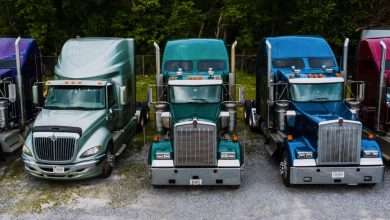The Advent of Vehicle Telematics for Auto Insurance Tech

Long before IoT or the Internet of Things became a buzzword, Telematics as a sector has been steadily growing with large, medium & small players all happily co-existing alongside each other. This particular sector has evolved to become very regional with strong capable solution providers dominating or striving in their respective markets be it Asia Pacific, Europe or Americas with minimal cross over. If we are to pick names, the list can be really long and it could deviate our attention from the topic in hand. Telematics can be defined as a technology that needs to be put in place on the locomotive and at the network access & cloud which can handle information about the driver/vehicle back to a command centre, where it is monitored in real-time. Erratic driving or mechanical failure with the vehicle could mean the difference between life and death and as a result, demand for telematics solutions is only growing. The market is estimated to be worth a whopping $233.34 billion by 2022.
Every car that has an in-built telematics system relies on the surrounding network infrastructure. It could be 2G in areas where LTE penetration is not strong or 4G LTE-M in urban areas or even a back up public Wi-Fi in certain regions. The advent of 5G is expected to be a game-changer for the industry and is expected to re-define the expectations from V2X technologies already in development & adoption. Subscriber Index Module or a SIM card as we all call it, is at the heart of any connected car or telematics solution. A particular advancement within the network access technology is the shift towards eSIM or embedded SIM technology which needs to be tightly integrated to the connectivity hardware. eSIM-based LPWAN (Low Powered Wide Area Network) connectivity is now replacing legacy networks like 2G & 3G for vehicle telematics. New age networks like LTE-M & NB IoT are taking over the reins with
Official data shows that as of 2020, there has been no significant decrease in the number of auto accidents when compared to data from 2010; although the original aim was to reduce this number by 50%. Insurance premiums are only rising, partly led by the increase in auto component costs. In the past, a fender bender meant a simple visit to the body shop. Today, it is a much more complicated process, requiring the replacement of several expensive sensors. Local laws have only compounded the financial aspect further. The state of Michigan in the United States, for instance, requires that all drivers on the road have unlimited coverage for personal injury – and this is to be a part of their auto insurance policy. This has resulted in auto insurance premiums soaring through the roof. The need to regulate premiums and claims has resulted in the insurance sector turning to technology to help put a sustainable roadmap in place for being humane, just and rational at the same time when it comes to processing claims or setting payment brackets.
So it makes sense to insurance companies, individual vehicle owners, and fleet management companies to have a usage-based insurance model. Root Insurance (an auto insurance company operating in Europe) has been personalising their offerings since 2018, based on the inputs from vehicle telematics solutions providers regarding the number of kilometres driven.
Hitachi forecasts that at the rate technology is progressing, a connected car will be uploading 25 GB of data onto a cloud every hour by 2025. Given that there will be 116 million connected cars by then in the United States, according to projections, we are talking about at least 25 billion terabytes of data per year. That is a lot of data, and predictive modeling will become the need of the hour to process this driver and vehicle data and that is when Machine Learning and Artificial Intelligence will become a staple element of the ecosystem.
It is no secret that auto insurance providers are always looking actively into lowering their costs. A good driver who takes good care of their car is the model customer; and only with telematics can they know if the service schedules have been adhered to on time. Telematics also relays information back on whether a particular driver accelerates and/or brakes suddenly a lot (indicating that he/she is a rash driver), at what speeds he/she makes turns, whether or not he/she uses turn signals, and much more. Such data could designate the vehicle user as a ‘safe driver’ or ‘unsafe driver’, helping auto insurance companies make better business decisions and also lower premiums for safe drivers. Driving patterns that include regular traffic violations can only be arrived at if the data from the civic body or police records is also made available to the insurance company. Similarly, many other external data points like speed limit violations, parking tickets and other fines can also be factored to build the profile of a ‘driver’.

Has the current vehicle onboard diagnostics solutions in the market evolved to truly aid the Insurance provider with actionable insights? The telematics industry though growing is not innovating at the required levels. If one were to ask the question of whether the current vehicle onboard diagnostics solutions in the market have evolved to truly aid the insurance provider with actionable insights, the answer would be not really. The telematics industry has been hit by one major roadblock – lack of seamless connectivity. For instance, this could turn out to be very critical when the vehicle is trying to access crucial weather/road diversion data. There could be a blizzard in the next town, but a driver on a mountain highway might lose connectivity en route. Depending on the destination, weather information for the selected route can be displayed to the driver and multi-network access can ensure that even if one network is weak a different network aids to stay smart connected. eSIM or embedded SIM technology that facilitates multi-network access and management is seeing great adoption, especially in logistics & transportation use cases. As technology improves, it will become cheaper to uplink telematics systems to satellites in areas not served by conventional mobile data networks. But until then, the rate of innovation in the field leaves much to be desired. Industry experts say what is on offer right now in the market in terms of user experience is sub-optimal and there is huge scope for improvement.
In urban areas, this will prove to be less of a problem. Vehicle telematics will be integrated with the Internet-of-Things so that the garage door would open automatically when the car approaches and the airconditioning and the lights turned on inside the residence. Narrowband Internet of Things, or NB-IoT, that is based on cellular LPWAN (which relies on LTE-M) has the potential to massively transform the telematics landscape. The opposite also holds true – if the car is driven out in the middle of the night when a single resident is still in the house, this points to the possibility of vehicle theft. It can mean a lot to the auto insurance provider if law enforcement is alerted immediately and the stolen vehicle recovered. Adequate controls can be put in place for homes with more than one resident.
With most of the world now covered by LTE-M, eSIM-based IoT connectivity solutions will ensure that telematics providers get to forget the hassles of IoT connectivity and focus more on innovating their product/service offerings. Telecoms around the world are aggressively deploying LTE-M to supplement legacy networks like 2G and facilitate the next wave of telematics solutions which will be on CAT 1/4 and LTE-M technologies.
As the world inches closer towards 5G, the day is not very far off when we see the V2X segment achieve exponential adoption with all automotive OEMs requiring to come together on a common platform to facilitate absolute interconnectivity. Overall, global consulting giant McKinsey believes that a massive $1.5 trillion could be unlocked in value from telematics data by 2030. Let’s hope the industry and the underlying technology lives up to the expectations.
Author:
Akhil is enthusiastic about new ideas, innovation, and technology. He is passionate about entrepreneurship, where people work in teams to build new products of their dreams. Like Jack Dorsey famously said, “Make every detail perfect and limit the number of details to perfect,” he believes in perfection and simplicity. He also believes that life should be a steep learning curve.
Published in Telematics Wire



One Comment